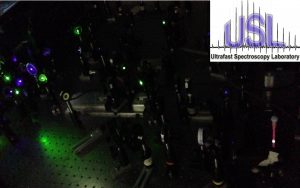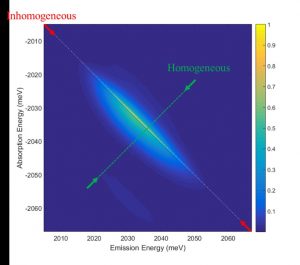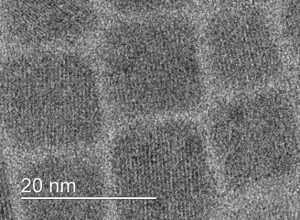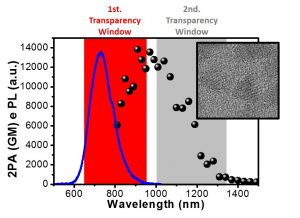
The Ultrafast Spectroscopy Laboratory is interest in problems related to light-matter interactions and electronic structure and ultrafast dynamics in quantum confined materials, going from the understanding of fundamental physical concepts to the development of devices and applications.
Click on the links below to find out more about each of our research projects and efforts.
Exciton Dynamics and Multi-Exciton Interaction in Nanomaterials
Quantum dots have emerged as a promising new class of materials for applications in technologies such as solar cells and lighting devices. In this project, we investigate processes involved in the electronic dynamics and multi-excitons interactions to understand some of the factors which has limited their application efficiency and guide the development of novel nanoparticles. Click here to learn more.
Materials exhibiting high third order optical nonlinearities are of interest for a number of applications, including optical communications and biophotonics. Furthermore, nonlinear spectroscopy allows us to access optical transitions which are forbidden by linear absorption methods. Here, we use nonlinear optical studies to understand the relations between structural properties and nonlinear optical response, and also to better understand materials electronic structures. Click here to learn more.
Controlling electron and hole interactions in nanomaterials is one of the most current challenges in the quantum dot field. Here, we investigate how we can manipulate electronic wavefunctions by engineering new heterostructured nanomaterials in order to enhance their emission properties. Click here to learn more.
Graphene Under High Intensity Photo-Excitation
Mostly due to its unprecedented electronic transport properties, in the last decade, graphene emerged as a promising material for optoelectronic applications. However, for many of those, it is necessary to understand graphene´s electronic and optical properties in the high excitation regime. Click here to learn more
2-D Coherent Spectroscopy in Nanomaterials
Colloidal nanomaterials present a finite size distribution which broadens the absorption and emission spectra, hiding underneath it a rich set of information concerning their electronic dynamics. From single dot spectroscopy it is possible to eliminate the size dependent broadening, however, at the cost of loosing temporal resolution. Here, we use advanced coherent methods to gain extreme temporal and spectral resolution to learn fundamental physical processes in nanomaterials. Click here to learn more
Using the high peak intensities from our femtosecond lasers, we are able to excite nonlinear optical processes in materials, in particular biomaterials. This, combined with the precision from a confocal Olympus microscope, allow us to use nonlinear optics to image biological tissues. Here we explore nonlinearities such CARS, and two-photon absorption. Click here to learn more




